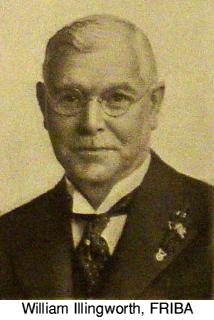|
Quick links to other sections on this page . . . Andrews & Pepper 1864 they designed the Royal Alexandra Theatre in Manningham Lane; this was later to become the Theatre Royal and cinema of the same name. 1871 Mechanics Institute once used for public meetings, early travelling bioscope film shows and later for 16mm local newsreels and 3-D films by local pioneer Eric Alderton of Erricks photographic shop situated in the same building. 1877 Alexandra Hotel to which the Empire Theatre (by W.R Sprague) was added at the rear. The pillared stepped façade of the 'Alex' was later used as the entrance foyer to the theatre and later Empire cinema. Lockwood & Mawson City centre designs included the Wool Exchange (now Waterstones), Great Northern (Victoria) Hotel, Town Hall (now City Hall) and the famous old Kirkgate Market hall. 1852 St George's Hall was the city's public hall for eminent speakers of the day and classical concerts. Some of the earliest films were shown here and it became and it became the headquarters for New Century Pictures and later used as a full-time cinema by Denman Pictures/Gaumont British. From 1953 it reverted back to a multi-purpose meeting/concert hall and is still in use in 2008. William Illingworth, FRIBA (1876-1955) 1911 Prince's Hall, Shipley for New Century Pictures. 1,100 seats (demolished). 1922 Saltaire Picture House (later Gaumont) for Saltaire Picture House Company Ltd. 1,500 seats. (demolished). 1930 New Victoria Theatre, Bradford for Provincial Cinematograph Theatres/Gaumont British (later Gaumont then Odeon). 3,500 seats. (threat of demolition) 1934 Crescent (later Dominion) Chapel Allerton, Leeds for Cansfields. 1,486 seats. (demolished). 1936 Regal Cinema, West Hartlepool for North East Entertainments. 1,688 seats. Bingo use in 2006. 1937 Savoy Cinema, Stanningley, Leeds for Cansfields Westfield Pictures Ltd circuit. 1,000 seats. (demolished). 1939 Clifton Cinema, Bramley, Leeds for Cansfields. 1,312 seats. (demolished). Illingworth's greatest cinema achievement was undoubtably the gigantic New Victoria Theatre, Ballroom, Restaurant and Tearoom complex - later to become the Gaumont then Odeon after conversion to three screens and bingo. Ernest H. Dawson, LRIBA, FSI, AMSA. Dawson's first Bradford cinema design in 1922 was the rather quaint Park Road cinema (later Western Talkie Theatre) just off Manchester Road. He was also the managing director of of the Park Road Cinema Co Ltd, the original proprietors. Later in 1932 he designed the splendid Glenroyal cinema in Briggate, Shipley for A.S Hyde and Clifford Cawthorne's Glenroyal Cinema Co Ltd. The Glenroyal was Shipley's only 'super' cinema with many advanced features and though long closed as a cinema, the building still stands in 2008 under threat of demolition. May not be copied or reproduced without permission.
|
 William Illingworth, a distinguished Bradford architect, City Alderman and Lord Mayor (1940-1941) and prominent Freemason. His private practice was in Sunbridge Road, Bradford. Illingworth's local cinema designs include . . .
William Illingworth, a distinguished Bradford architect, City Alderman and Lord Mayor (1940-1941) and prominent Freemason. His private practice was in Sunbridge Road, Bradford. Illingworth's local cinema designs include . . .